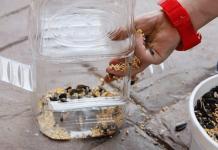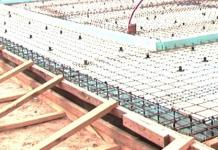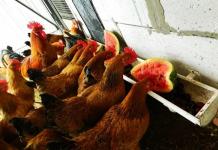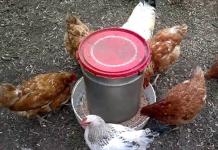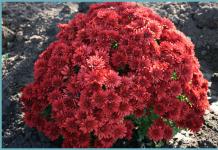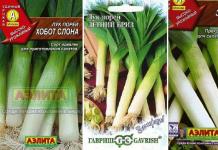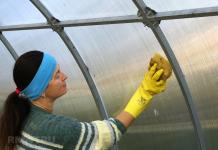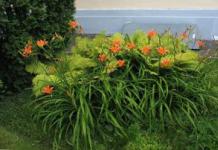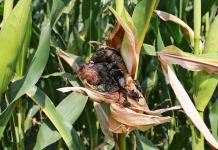Leeks have recently become one of the favorite bulbous crops grown throughout our country. It is valued both for its beneficial properties and for the fact that it can be stored for a long time, and the longer the leek lies somewhere in the cellar, the greater the amount of vitamin C it accumulates.
Growing leeks from seeds is somewhat painstaking, but not at all difficult. The fact is that its seedlings grow quite slowly, and for the most part they are planted early - in the second half of February. Leek seeds can be planted directly into open ground only in the southern regions, otherwise it will not have time to grow to technical ripeness.

Growing seedlings
When to plant leek seedlings depends on your region and climatic conditions. In the central part of Russia this is usually the end of February - March. At this time, leeks are sown in boxes and placed on windows. In early - mid-April, you can sow this crop in greenhouses.
Planting leeks for seedlings begins with preparing the seeds. Usually they are soaked for several hours in hot water 40-45°C (you can use a thermos), and then in cold water. You can also germinate the seeds - this will speed up their germination. Sprout leek seeds on a damp cloth in a warm place. They begin to hatch within 2-3 days. The sprouted seeds are dried so that they become free-flowing (more convenient to plant) and immediately sown in prepared boxes.
The soil for seedlings is prepared light and airy, always using compost, peat, and sand. You can also buy ready-made nutrient soil in the store.
The soil in the boxes is moistened, grooves 15 mm deep are made and the seeds are sown. The boxes must be covered with film or glass and placed in a warm place. Germination temperature 20-25°C. As soon as friendly shoots appear, the boxes are placed in a cool room with a temperature no higher than +17°C during the day and +12°C at night, where they are kept for 7 days. Then the air temperature in the room is raised to +17 - +20°C and the seedlings are grown at this temperature for the entire time. This temperature regime is necessary to ensure that the leek does not go into the arrow.
Additional lighting is also necessary for seedlings: throughout the entire growing period, the sprouts should receive 10-12 hours of daylight. Otherwise, the seedlings will stretch out and fall. Therefore, it is immediately necessary to resolve the issue of additional lamps for leek seedlings.
It is very good to feed young onion sprouts with compost tea: such nutritious watering should be done every 2 weeks.
About a month after germination, the seedlings are picked and planted in separate containers. Or they simply thin out the seedlings in the boxes, leaving about 3 cm between them.

A little trick: regularly trim the growing leek feathers, leaving a length of about 10 cm. This will enable the growth of a strong root system and gradually lead to a thickening of the stem. Trimming can be done almost every 14 days as the feathers grow.
Shortly before the planned transplantation of seedlings into open ground, begin to harden them: take them out onto the balcony, loggia, veranda, create conditions closer to normal, and not to indoor conditions.
Seedlings are ready for permanent planting at the age of 6-8 weeks. It must have 3 true leaves and a stem with a diameter of at least 5 mm.
Leek cultivation and care
The bed for leeks is prepared in the fall: it is dug up with compost or humus. You can add well-rotted manure. In the spring, compost is added to the garden bed and no longer dug, but lightly loosened with a rake.
Leeks grow well after potatoes, cabbage, legumes, tomatoes and cucumbers. It gets along well with carrots, strawberries, celery, beets and regular onions. Take this into account when choosing a place for it in your garden.
Leek seedlings are planted in holes, the depth of which is about 15 cm. A handful of rotted manure or compost is placed at the bottom of each hole. The seedlings are deepened so that the hole is half covered with soil. Well watered.
When planting, you can cut off the roots of the seedlings and the green arrow leaves by about a third. Dip the roots in a mixture of clay and manure - this will improve the survival rate of the plants.
When the plants get a little stronger and begin to grow, add soil to the holes. And then, throughout the season, the leeks are hilled regularly to get a nice bleached stem.

It is best to mulch the soil in the garden bed. Straw, old leaves, wood shavings, and pine needles are suitable for these purposes. Mulching the soil makes caring for plants much easier and retains moisture in the soil.
Feed leeks with mullein or bird droppings. During the season, about 4 feedings are carried out. It is better to combine them with watering.
Leeks grow until late autumn and can withstand frosts down to -7°C. It is stored in the cellar in boxes. The stems are placed in boxes in a vertical position and covered with sand.
It’s been almost 10 years since leeks of the Dutch variety “Bandit” have firmly established themselves in my garden. Despite the fact that the variety is late, I chose it because it is easy to grow and very profitable: one stem with cut leaves weighs up to 500 g. A powerful false stem can be up to 7 cm thick, and with skillful hilling or mulching you can get a white part up to 30 cm high. Of course, in addition to it, there is also an early ripening period, but this is so that already at the end of August you can bake your favorite onion pie.
Many are frightened by the thought of growing leeks, they say, you will suffer a lot with tomato seedlings, and then you also have to sow onions in February. It's really not that much of a hassle. For example, 50-60 leek stalks are enough for us to diversify our diet in winter. To grow this amount of onions you only need 3 plastic containers 9x9 cm, 10 cm high, with good drainage holes.
At the bottom of the container I put a piece of thin toilet paper (so that the soil does not wash out during watering), and sprinkle a little fine expanded clay. To loose soil (neutral peat, turf soil, etc.) I add 5 liters of soaked hydrogel, a glass of wood ash, 1 liter of river sand. The hydrogel is needed not so much to retain moisture, but to ensure that the seedlings tolerate planting in the garden bed less painfully: the roots penetrate the swollen hydrogel even in the first days of the system.
And 2-5 days before sowing, I thoroughly wash the seeds in warm water, soak them for 2-3 hours, then pickle them in potassium permanganate for 20 minutes, rinse them and wrap them in a napkin. I place it in a plastic container and put it in a warm place. After 2 days, I select all the sprouted seeds and place them in containers. I first cover the soil in the containers with a centimeter layer of snow. I lay out the seeds (25 pieces per pot) using tweezers. Then I sprinkle 1 cm of damp soil, place it in a plastic bag and place it in a warm, bright place. After 2 days, I check the remaining seeds again, select those that have hatched and plant them. Those left without signs of sprout, I simply throw them away - this is not standard. Only old, dried seeds can take longer to germinate; fresh crops begin to hatch by the end of the first day.
The best sowing time is the end of February. When sprouts appear above the soil, I open the bag slightly, transfer it to a cool place, and after 3-4 days I completely remove it. Now the leek will grow slowly on a light windowsill, needing only watering and one fertilizing per month with complex mineral fertilizer. But there is one trick. When the feather reaches 5 cm in height, I mulch the plants in the pot with a mixture of peat and vermicompost (1 tablespoon per 1 liter). And when the second feather begins to appear, I water it with vermicompost infusion or ready-made Vermicoffee.
At the end of April, I prepare a bed 50-60 cm wide and at least 5 m long. It is advisable that potatoes, cucumbers or cabbage grow in this place last year, under which humus was added, because leeks love well-seasoned soil, but do not tolerate fresh soil. manure and even poorly decomposed compost. When digging, be sure to add wood ash.
Before planting, I water the seedlings generously, remove them from the container and carefully disassemble them, separating each plant.
I mark three lines on the prepared, moistened bed. On the central planting are early ripening radishes or lettuce. On the outer lines I make ditches 10-15 cm deep and in them, every 20 cm, I make indentations with a sharp peg into which I carefully plant leek seedlings. It turns out that one hundred onions will grow in small ditches. I water the plantings well. I always cover the bed with film or agricultural canvas: this way both the onion and its companion will grow faster. When transplanting, it is very important not to damage or bend the tender roots of the leek. If the roots are very long, they can be cut by a third, but be sure to “bathe” them in the ash.
The cover can be removed after a couple of weeks, when the catch crop grows and the leek begins to grow. In addition to weeding and watering at this time, it is important to gradually pour soil into the furrows so that the leek can grow a false stem.
After the harvest of radishes or lettuce that grew in the inter-row is harvested (plant residues are embedded in the soil!), you can feed the leeks with a raster of mullein and hill them up higher. In the future, only watering and another high hilling will be needed. To prevent soil from getting into the leaf wrappers, instead of hilling, you can use high mulching with dried grass. At the beginning of September, the tall stems are once again hilled or wrapped with thick paper, because the higher the “leg” is bleached, the better the quality of the leek. Don't rush to harvest: leeks are dug up in October. Its green leaves are cut off, leaving only a small rosette and roots, without touching the bottom.
Leeks are perfectly stored in the basement or on a frost-free loggia; for this you need a deep bucket and sawdust. The onion is “put” in a bucket and covered with shavings, which are periodically lightly moistened with water.
My leek does not suffer from anything and is not damaged by anyone. For prevention, I spray it with a phytosporin solution 2-3 times in June-July along with onions.
It often happens that at the end of summer the leek throws out the flower shoot and becomes inedible. This is only because you chose an early variety and sowed it in February. Early varieties should be sown no earlier than March 10, and from the beginning of August they can be harvested as needed. But the later ones - the same Bandit, Karatansky, sow in February. And it’s time to prepare mid-season crops like Tango for sowing.
The packet of seeds usually indicates how many days it takes for the seeds to germinate. The same information can be found in the grower's reference book. But the actual waiting time for the first shoots may differ significantly from the numbers given. Why does this happen, and what factors influence the germination process?
Seed germination time
The time that will pass from the moment the seed falls into the ground until the first sprout appears is determined genetically. Thus, the undisputed leader is watercress, which will sprout in 3-4 days. But leeks will need much more time for this - about 2 weeks. Below you will find a detailed germination table.
Table No. 1: How many days after sowing do seeds germinate?
(Source: book “Seedlings and Seeds”, look at the third column and other useful information 😉)

Table of timing of seed germination No. 2:
(Source: book “All About Vegetables”, D. G. Hession)
| Culture | Time from planting to emergence |
| Jerusalem artichoke | 2 – 4 weeks |
| Eggplant | 14 – 21 days |
| Beans | 7 – 14 days |
| Beans | 7 – 14 days |
| Chard | 10 – 14 days |
| Beet | 10-14 days |
| Cabbage (all types) | 7 – 12 days |
| Pepper | 14 – 21 days |
| Carrot | 17 days |
| Celery root and petiole | 12 – 18 days |
| Chicory | 7 – 14 days |
| Cucumber indoors | 3 – 5 days |
| Cucumber in open ground | 6 – 9 days |
| Endive | 3 – 7 days |
| Kohlrabi | 10 days |
| Leek | 14 – 18 days |
| Leaf and head lettuce | 6 – 12 days |
| Pumpkin, zucchini, zucchini, squash, | 5 – 8 days |
| Onions and shallots | 11 – 14 days |
| Onions from seeds | 21 day |
| Parsnip | 10 – 28 days |
| Peas | 7 – 10 days |
| Radish, radish | 4 – 7 days |
| Spinach | 12 – 20 days |
| Swede | 6 – 10 days |
| Corn | 10 – 12 days |
| Tomato indoors | 8 – 11 days |
| Tomato in open ground | 8 – 11 days |
| Turnip | 6 – 10 days |
It should be taken into account that the data presented assume optimal conditions for germination of seeds pre-soaked in warm water. If the environment does not meet these conditions, the plants will develop at a slower pace. But there are also ways to reduce germination time several times.
Why do seeds germinate poorly?
There are several reasons for this, and the most common of them is that the seed is too old. Improper storage can lead to the same results, during which the seeds partially lose their ability to develop. But even with the highest quality seeds, a gardener may encounter this problem if:
- Plant seeds in excessively moist, oxygen-poor soil;
- Before planting, treat the soil with pesticides. Not only harmful bacteria die from them, but also all beneficial microflora, and it takes time to restore it;
- Fertilize the beds with mineral compounds of unacceptably high concentration;
- Plant seeds in very cold or too warm soil (earlier or later than required).
- Excessively bury seeds in the soil. To determine the correct depth, double the length of the seed (for small to medium sized seeds), or multiply it by 4 (for plants with large seeds);
- Water the beds before the first shoots appear: jets of water turn over the seeds, and the barely hatched sprouts die, becoming disoriented;
- Allow the top layer of soil to dry out, causing the sprouts to die. The most susceptible to this are seeds that were soaked before planting, since dried soil draws moisture from them.
These are the possible reasons why seeds germinate poorly and take much longer to germinate than indicated in the day tables. Avoiding the last two mutually exclusive reasons is simple: to do this, it is enough to sow the seeds, cover the bed with plastic wrap and securely fasten it. Instead of film, you can use any thick fabric and water directly over it. With the emergence of shoots, the film or fabric is removed. There are also covering materials (spunbond, lutrasil) that do not need to be removed so that they protect the seedlings from frost and pest invasion.
Like many vegetable crops, leeks came to us from warm countries. The Middle East is considered the birthplace of this plant. Despite the fact that it has been actively cultivated in the world for more than 7 thousand years, in our country it began to be grown only in the middle of the twentieth century.
Leeks have a powerful, branching root system that goes deep into the ground, a bulb without a head, a large, thick stem with lanceolate leaves tightly adjacent to it. Its large umbrella inflorescence is formed by small white-pink flowers. The seeds are dense, triangular, nicknamed nigella for their dark color, and remain viable for 2-4 years.
The culture is biennial, although it is more common to grow leeks through seedlings for one year. The young, tender leaves are edible; a particularly valuable part for cooking is the false bulb, called the white stipe. In the second year, the plant sprouts, forms an inflorescence and seeds, but loses its taste and is no longer used in cooking.
Due to the high content of microelements necessary for humans (iron, phosphorus, potassium, magnesium, sulfur, calcium) and a complex of vitamins A, C, E, B1, B2, the amount of which does not decrease during storage, leek is widely used in cooking and cosmetology. It is also used for prevention and as a component of complex treatment of many diseases.
Classification of varieties according to ripening time
Depending on the length of the growing season, all varieties and hybrids of leeks can be divided into three groups:
Early ripening: 130-150 days, the most productive, has light, thin leaves, average weight 200-350 grams, the diameter of the white leg is no more than 3 cm. The most popular early ripening varieties: Columbus, Vesta, Elephant Trunk.
Mid-season: 150-180 days, have a more developed white stem, are well stored, frost-resistant (up to -7). The plant weight is about 250 grams, the shelf life is over 3 months. Mid-season varieties include: Kazimir, Pobeditel, Elephant.
Late ripening: more than 180 days, stored very well, until next summer, the taste is sharper, the leaves are dark and hard. The most famous varieties: Alligator, Karantansky, Bandit, Autumn Giant.
Landing dates
In all climatic zones, leeks can be successfully grown if proper agricultural practices are followed. The long growing season makes it possible to sow seeds in beds only in the southern regions; in most of our country, the seedling method is used. To determine the timing of sowing, it is necessary to take into account a number of factors:
- The optimal age of seedlings for transplanting them into open ground is 60-70 days.
- Weather forecast for the period of planting seedlings in the garden and harvesting. Plants can be planted in beds when the temperature does not drop below + 10 degrees even at night. And you need to harvest the crop before the first frost.
- Choose the right variety, depending on the duration of its growing season.
Let's look at several examples of determining the optimal period for different regions.
According to the weather forecast for 2018, in the North-West region the temperature allowing for planting seedlings in open ground will be established in mid-May, and onions must be harvested before the first frost, which is expected in early October. This means they will sow leeks for seedlings in early March, and choose varieties with a growing season of up to 190-200 days.
In the Moscow region and the central region, seedlings can be planted in the ground from the second ten days of May, and harvesting can be completed before the first days of October. This means sowing seedlings in early March.
In Siberia and the Urals, warmth will set in in the first ten days of June, and the harvest will take place in the third ten days of September. This means that seeds should be sown between the end of March and the beginning of April. And choose varieties with a growing season not exceeding 170-180 days.
In the southern regions, thanks to the long warm season, you can choose varieties even with the longest growing season. So the weather in the Sochi area will not drop below + 10-12 degrees by the end of March. And the first frosts are expected only closer to the New Year holidays. At the end of April, stable warm weather will set in above + 15 degrees, which will allow you to sow seeds in the garden even without seedlings (direct sowing into the soil). And to plant leeks for seedlings from the beginning of February.
To determine the most suitable date, it makes sense to use the recommendations of the lunar calendar.
Preparing soil for seedlings
The soil intended for seedlings must be nutritious, soft, loose, and pH neutral. Soil purchased at a garden store should contain vermicompost, mineral fertilizers and raising agents. When preparing the soil mixture with your own hands, you need to thoroughly mix compost, garden soil and perlite in a ratio of 2:1:1, add 15-20 grams of wood ash and superphosphate per kilogram of the mixture. Before planting, the soil is generously spilled with a solution of Fitosporin M, copper sulfate or potassium permanganate to disinfect it.
Preparing seeds for sowing
Preparing seeds for sowing includes two mandatory stages: calibration and disinfection. During a visual inspection, all deformed and small seeds are rejected.
Disinfection is required to prevent diseases. It is carried out like this: a fabric bag with seed is placed in a 1% solution of potassium permanganate or 3% hydrogen peroxide for 15-20 minutes. After this, the seeds are washed with clean water and dried.
Some vegetable growers awaken the seeds before planting in order to speed up the start of the growing season. To do this, place a damp cloth at the bottom of a plastic tray and spread onion seeds over its surface. Cover the top with a second layer of damp cloth, close the tray lid and leave for 3-5 days. Every day you need to open the container to ventilate and control the moisture level of the fabric. If desired, you can additionally treat them with growth stimulants such as Epin, Biostim, Silkomil or Biocon. Solutions of these drugs are prepared and used in accordance with the instructions given on the packaging.
Container for sowing leek seeds
Mandatory requirements for the container are the presence of drainage holes at the bottom and the height of the sides is not less than 12-15 cm, and whether it is a common tray or an individual container for each seedling does not matter.
Unlike most vegetable crops, the root system of leeks develops quickly. During the first 3-4 weeks, the main root grows to a depth of 10 cm, and lateral roots branch off from it, gradually mastering the entire volume of the planting container. This feature of the development of the root system allows you to grow seedlings without picking.
Important! Before filling the planting container with soil mixture, it must be disinfected with a 3% solution of potassium permanganate.
Sowing
The technology for sowing seedlings is not complicated:
- Fill the containers with pre-prepared soil mixture so that the soil layer is at least 10 cm. Moisten it.
- Distribute calibrated and disinfected seeds over the soil surface so that the distance between them is 4-5 cm.
- Sprinkle a half-centimeter layer of loose soil on top.
- Cover with a lid, glass or film to maintain moisture and create a greenhouse effect. Before emergence, planting containers should be in a warm place, at a temperature of 22-24 degrees. Every day you need to open the lid or remove the film for ventilation for a few minutes.
Seedling care
One to two weeks after sowing, the seedlings will hatch. Then the film from the planting containers needs to be removed and the room temperature reduced to 12-15 degrees. And after another 7 days it needs to be increased to 15-20 degrees and maintained at this level throughout the entire period of seedling growth. Failure to comply with the temperature regime stimulates premature bolting of plants and loss of its nutritional value already in the first year of life.
For normal development, leek seedlings need 12 hours of daylight. Since there is not enough natural light in early spring, the seedlings will need to be illuminated with a phytolamp.
Leek seedlings grow well only in moist soil, so they require regular watering with warm water. The soil should not be allowed to dry out.
The first feeding is carried out 2 weeks after sowing, and the second after another month. A good fertilizer for leeks is compost tea (compost infusion with water 1:10) or a solution of Kemira-Universal, Agricola (vegetable).
7-10 days before planting the seedlings in a permanent place, they are hardened off and the containers are taken outside. The time spent by seedlings in the fresh air gradually increases from 0.5 hours to a full day.
Leeks in a snail and in film for seedlings
In recent years, an original method of growing seedlings in film or in a snail has become widespread among summer residents.
To make the twist, you will need a strip of thin (2 mm) backing for the laminate, 15 cm wide. Place a layer of toilet paper on it, moisten it with water or Epin solution, stepping back 5 cm from the side edge. Seeds are laid out at intervals of 2-4 cm from each other. so that the distance to the top edge is about 1-1.5 cm. Then cover with another layer of paper, which is also moistened.
After this, the strip is carefully rolled into a roll, secured with an elastic band or adhesive tape, and placed on a tray with a small amount of water. The top of the tray is covered with film and left in a warm place. After the seedlings emerge, the film is removed, and when the seedlings grow to 5-6 cm, they are planted in containers with soil. If, instead of toilet paper, you place a layer of soil mixture on the substrate, then the seedlings develop in the snail all the time before planting in the garden bed.
The advantages of this method include saving space occupied by seedlings, which is important for city apartments. In addition, it is easier to plant seedlings by unwinding the snail, and the amount of soil substrate required when using this method is less than with traditional cultivation.
However, this method also has disadvantages: it is more difficult to provide sufficient lighting necessary for seedlings, this is especially important for light-loving crops, the stems of which begin to stretch excessively and the formation of the root system slows down.
Preparing the garden space
The bed chosen for growing leeks should be in a flat, open, sunny, unshaded area. It grows well after cabbage, tomatoes, zucchini, squash, eggplant, lettuce, potatoes, soybeans, and beans. And where garlic, carrots, corn, beets, and onions grew last season, this crop cannot be planted. Good neighbors for it will be beets, parsley, dill, carrots, spinach, cucumber, cabbage, tomatoes, and potatoes.
Preparing the bed for spring planting of leeks should begin in the fall. During this period, it needs to be dug up to the depth of a spade bayonet (20-25 cm), cleared of weeds, plant debris, and other debris. It should be remembered that this crop develops well on light sandy or loamy soils. Therefore, if the soil in the garden is clayey, you need to add river sand when digging.
An important condition for good crop growth is neutral or slightly alkaline soil with a pH of 6-7. The level of acidity can be determined using a special device or by the change in color of a strip of litmus paper when it comes into contact with wet soil. If the acidity of the soil is higher than normal, it should be limed; when digging, add slaked lime, dolomite flour or chalk.
Leeks prefer fertilized, oily, fertile soil, so you should add at least 5-6 kg. organic fertilizers not every square meter.
Important! Fresh manure should not be used as organic fertilizer for bulbous crops. The best choice would be 2-year-old humus or compost.
It would not be superfluous to sow green manures that produce a large volume of green mass; they inhibit the development of pest larvae (wireworms, nematodes) and pathogenic microorganisms: buckwheat, white mustard, oats, yellow lupine. As a mineral fertilizer, it is enough to add 15 grams. nitroammophoska per sq. meter of bed.
In the spring, before planting seedlings in the ground, the bed should be dug up, compost and mineral fertilizer should be added in the same amount as in the fall. If the soil is heavy, you can additionally mix it with vermiculite.
Technology of planting seedlings in open ground

Despite the fact that this crop is winter-hardy and is not afraid of return frosts, the cold can destroy unrooted seedlings. Therefore, planting should be done only on warm days:
- On the prepared bed, grooves are formed, the depth of which is 15-20 cm. The distance between them should not be less than 20 cm.
- Flush the groove with warm water. Some vegetable growers recommend watering the beds with a 3% solution of potassium permanganate in order to disinfect the soil.
- When the water is absorbed, the seedlings are laid out, which by this time should have 3-4 true leaves, at intervals of 10-20 cm so that the roots face north.
- Sprinkle the top with soil, deepening down to the first leaves.
Many experienced gardeners recommend cutting the leaves by 1/3 of their length two days before planting in order to reduce the evaporation of moisture from the leaves. Before transplantation, the cut sites have time to dry. According to their observations, if this operation is carried out, the seedlings take root better in their permanent place. And during planting itself, the roots are cut by 1/3 for more intensive branching and the development of a powerful and strong root system.
Caring for sprouts after planting in open ground
The plants are not watered for the first 3 days after transplantation. In the future, the crop requires abundant watering, up to a bucket of water per square meter every 5 days. If there is a lack of moisture in the soil, the size of the white stem will be significantly lower than normal, and the taste of the onion will lose its inherent sweetness. But it is important to avoid stagnation of water, which will increase the likelihood of disease and rotting of the onion root.
Fertilizing is usually applied 4 times at equal intervals. The garden bed is fertilized for the first time on the 20th day after planting. A good feed is bird droppings or mullein diluted in water 1:20. Mineral fertilizers should include potassium and phosphorus.
After each watering or fertilizing, the beds need to be loosened. This not only helps to clear weeds, but also saturates the soil with air.
The most important element in caring for leeks is repeated hilling. It ensures elongation and whitening of most of the stem. Light hilling is carried out after the seedlings have completely taken root in the garden bed. The height of the earthen mound should reach the first leaves.
Features of growing leeks directly from seeds into the ground
The crop has a long growing season, so growing it without seedlings, sowing seeds directly into the garden bed, is possible only in the southern regions. Where warm weather lasts more than 6-7 months a year. For the normal development of a bulbous seed, the temperature must be kept at 20-25 degrees above zero, and the daylight hours must be at least 10-12 hours a day.
Site selection, soil preparation and seed treatment are carried out in the same way as when planting by seedlings. But there are some features:
- grooves are formed with a depth of 5-7 cm;
- Unlike seedlings, it is recommended to sow seeds more densely, with an interval of 2-3 cm from each other. And after germination, thin out;
- The seeds are buried, usually no more than 3-5 cm.
Further care of plants does not differ from that described above.
Storing the leek harvest
Harvesting must be completed before the onset of sub-zero temperatures - the first frost. When it comes time to harvest leeks, remember that it is better to do this in dry weather, so that it is easier to clean the bulbs from adhering soil.
Each plant is dug up and allowed to dry a little. Then carefully remove the remaining soil. The roots are trimmed, leaving 2 cm. The dried bulbs must be carefully examined. Only strong, even bulbs, without signs of damage or disease, are suitable for long-term storage.
The storage room should have a humidity no higher than 85% and a temperature of about 0 degrees. The harvest is placed vertically in wooden boxes at the bottom of which a five-centimeter layer of pre-disinfected sand is poured. It is also good to store leeks frozen.
Control of possible pests and diseases
The main causes of diseases are improper agricultural practices and infection. Stagnation of water in the garden can provoke the development of fungal diseases, powdery mildew, onion rust, neck rot, and stem nematodes remain in the soil if it is not disinfected.
Powdery mildew characterized by the appearance of a whitish coating on the leaves. The pathogen persists in plant debris; an infected plant cannot be cured; it is removed and its neighbors are treated with a fungicide.
Onion rust begins with the appearance of brown and yellow spots, which are clusters of spores. The spots spread over the entire surface of the plant. Affected plants should be dug up and destroyed, and the remaining ones should be treated with Fitosporin M solution.
Cervical rot. Fungus infection occurs in the garden bed, but the disease develops later, during storage. In diseased plants, the white stem softens and an unpleasant putrid odor appears.
Stem nematode manifests itself in the fact that infected plants are noticeably stunted in growth, their stems and leaves are deformed. Such onions need to be removed from the garden.
Mosaic- a viral disease transmitted by aphids. It manifests itself in the cessation of plant growth and the appearance of light longitudinal spots on its leaves. Infected plants must be dug up and destroyed.
Pests:
- stem nematode;
- onion fly;
- secretive beetle;
- onion cracker.
They devour plants, lay eggs in it and become carriers of viral diseases. To combat them, onions are treated with insecticides. To prevent pest attacks, a concentrated decoction of wormwood has proven itself, which is sprayed on the leaves, watering the beds with an ash solution of iodine and potassium permanganate (1 kg of ash per 10 liters of water, 10 drops of iodine and 1 g of potassium permanganate).
Secrets of growing leeks in open ground from seeds and seedlings.
Just a couple of years ago, leeks were not very popular among housewives, and they used them for cooking only occasionally. But at the moment this product has become very popular and people began to consume it not only fresh, but also dried and pickled.
Of course, you can regularly eat leek only if you grow it yourself in your own garden bed. After all, if you buy it all year round in a store, then preparing the goodies will be expensive. Our article will tell you how to properly grow leeks from seeds.
What does a leek look like: photo
Leeks: photoLeeks are a fairly tall green plant, which looks very different from the onions we are used to. It does not have a large rounded bottom. Or rather, it is there, but less pronounced and has an oblong rather than a round shape. A massive white stem emerges from the top of the false bulb. As a rule, its thickness is almost the same as the size of the false bulb. The stem ends in a fan-shaped bunch of long green leaves. You can see what leeks look like in the photo located a little higher.
Treatment of leek seeds before planting: description
Experienced gardeners know that absolutely all seeds need to be prepared for sowing in a way that promotes faster germination and rooting. Leek seeds are no exception and are also best prepared properly.
So:
- First, boil the water and then cool it to 45 degrees
- Place the seeds in a piece of gauze, tie it into a kind of bag and lower it into warm water for 25 minutes.
- After this, dip the seeds in cool water and place them on a damp cloth.
- Cover them with another piece of cloth and leave them alone for 3-5 days.
- Don't forget to periodically moisten the fabric with a spray bottle.
- After the specified time, the seeds will be ready for sowing
- If desired, you can additionally treat them with growth stimulants and disinfect them in a weak solution of potassium permanganate
When to plant leeks for seedlings: planting time

 Leeks for seedlings
Leeks for seedlings If you want to grow leeks from seeds into seedlings, then remember that this plant has a fairly long growing season. Depending on the variety, it can range from 4 to 6 months. This nuance must be taken into account, especially if you live in a region with a colder climate.
If you start growing seedlings later than necessary, you risk not getting a good harvest. In order for even late-ripening varieties of leeks to ripen before the cold weather, seeds should be sown for seedlings in mid-February or early March.
Sowing leek seeds for seedlings
IMPORTANT: Before you start sowing leek seeds for seedlings, carefully prepare the soil and containers in which they will germinate. Both the soil and the container must be disinfected with any means available to you, and only after that can you proceed to further work.
- First, mix the soil with fertilizer and lightly moisten it.
- Place it in a disinfected box and lightly compact it
- This must be done to ensure that there are no voids in the soil that will prevent the seedlings from taking root.
- Next, we make not very deep grooves in the soil, literally 2 cm deep.
- We sow leek seeds in them, sprinkle them with soil, moisten it with a spray bottle and cover everything with film
- Seeds sown in this way should be placed in a warm place.
- The room temperature must be maintained at least +20
- After the shoots appear, the seedlings are removed to a cooler place and hardening begins
- To do this, remove the film from the box and begin to gradually reduce the temperature in the room
- In order for the seedlings to feel comfortable, the temperature should drop by 1 degree every day.
- When the temperature drops to 14 degrees, hardening stops
How long does it take for leeks to sprout from seeds?

 Leek seedlings
Leek seedlings In principle, leek seeds germinate quite quickly. True, for this they need to create the right conditions. This means that they should have enough moisture in the soil, and the room temperature should not fall below +18. If all these rules are followed, the seeds will sprout within 5-7 days. If they germinate in not entirely correct conditions, then even 20 days may pass before the first shoots appear.
Picking leek seedlings and care
Experienced gardeners claim that there is no need to pick leek seedlings as they take root well in open ground or a greenhouse without this procedure. But still, as practice shows, in the end such plants grow weaker because they are replanted with a very weak root system. In view of this, it will be better if you still carry out a pick. Moreover, it does not require any special effort. All you need to do is disinfect the soil and containers in which the seedlings will be planted in advance.
After this, moisten the soil in the container with the seedlings, but do it as carefully as possible. If you simply flood it, the tender sprouts will begin to fall to one side. After this, carefully remove the plant from the soil, straighten its root system, and immediately transfer it to a new container. As for care, in this case it will consist of timely watering and maintaining the temperature at the optimal level.
After which you can plant leeks, what kind of soil does it like?

 Predecessors of leeks
Predecessors of leeks In principle, leeks are considered an unpretentious plant, so with proper care they can grow on any soil. But still, if your goal is a good harvest, then remember that it feels best on light, fertile soils with normal acidity. In view of this, if you know that the soil in your garden is not very good, then before planting the seedlings, fertilize it thoroughly with organic fertilizers or superphosphate. If the acidity of the soil in the area is increased, then liming must be carried out.
It is also very important to consider what plants grew in the bed in front of the leeks. So, if you plant this crop in a garden bed where garlic or onions grew last season, you may not get a good harvest. Since these crops have the same diseases and pests, as a result, the leek may begin to hurt immediately after you plant it in the garden. Its most ideal predecessors are radishes, cabbage, lettuce, dill and sorrel.
When to plant leeks in open ground: planting time
Planting plants in the ground is a rather serious procedure that must be carried out at the most optimal time. Optimal time means positive daytime and night temperatures. If the difference between night and day indicators is very large, then the leek will be under constant stress, which will lead to the fact that it will not be able to take root and will begin to hurt.
In view of this, plant the crop in the ground when the temperature at night remains at +12, and during the day the temperature does not drop below +18. Depending on the region, leeks can be planted in the ground in mid-May or early June.
How to properly plant leeks in open ground in a garden bed: planting diagram

 Leek planting scheme
Leek planting scheme Leeks, like any other vegetable crop, love space. It is necessary so that the plant can take root well and take the right amount of nutrients from the soil. If you plant seedlings very close to each other, the plants will grow weak and constantly move upward.
All this will lead to the fact that you will end up with a very thin leek with a poorly developed white part of the stem. To prevent this from happening, stick to the correct planting pattern. Plant leeks in rows. The distance between crops in a row should be at least 10 cm, and the distance between rows should be at least 20 cm.
How to sow leek seeds in open ground: technology
IMPORTANT: You can use this method of growing leeks in open ground only if you live in a region where nighttime temperatures do not fall below +10 degrees at the end of April and do not drop below +15 in mid-September.
So:
- Choose a place for planting that receives as much sun as possible throughout the day.
- This will contribute to maximum warming of the soil during the day, which will prevent the leek sprouts from getting too cold at night.
- Dig the bed thoroughly. Ideally, the soil should fluff up to a depth of 20 cm
- When digging, be sure to add fertilizer to the soil, for example, urea, superphosphate or ordinary compost.
- Once the soil has been prepared, you can begin sowing the seeds (pre-prepared)
- To do this, make grooves 7-10 cm deep in the bed. The distance between the grooves should be 20 cm
- Moisten the furrows and sow seeds in them
- Sprinkle them with 2 cm of soil, compact it slightly, and moisten the soil with a spray bottle
- After the leek germinates, be sure to thin it out.
Are leeks afraid of spring frosts?

 Frosts slow down the development of leeks
Frosts slow down the development of leeks In some sources you can find information that leeks tolerate light frosts quite calmly. This is why some novice gardeners make the mistake of planting seedlings in open ground without waiting for positive temperatures at night.
Thus, they make a big mistake since this information concerns exclusively adult and mature plants. If you plant leek seedlings in the soil during frosts, they will inevitably begin to hurt. Yes, it is likely that it will not die, but it will begin to grow and develop intensively only after the temperature ceases to drop below +12 degrees.
Feeding leeks after planting: fertilizers, folk recipes
Leek seedlings, like any other plant, after planting in the ground, must be fed with special fertilizers and fertilizers. If this is not done, the plant will not be able to take root quickly and will most likely not be able to mature before the first frost. It is best to fertilize in several stages so that the plant always receives the amount of nutrients it needs.
Immediately after planting in the ground, feed it with urea. To do this, separate 10 g of the substance in 10 liters of water and pour the leek under the root. After another 14-20 days, add a nitrophoska solution to the soil. After this, you need to take a break and simply periodically loosen the soil and remove any weeds that have appeared. In addition, you can use the following fertilizers.
Mullein infusion
- Take 3 kg of rotted mullein and fill it with 7 liters of water
- Mix everything thoroughly and leave to ferment for 7-10 days.
- Before use, stir the liquid again and measure 1 liter
- Dilute it in 9 liters of water, and you can feed the leeks
Nettle infusion
- Pick nettles, chop them and put them in a bucket
- You should have half a bucket of green mass
- Boil water and pour it over the nettles
- Let it brew for 7 days
- The finished nettle infusion is diluted with water (1:10) and the leek is watered
Leek diseases and their treatment and pest control: description

 Leek diseases and their treatment
Leek diseases and their treatment There is an opinion that leeks, like most representatives of the Onion family, have fungicidal properties that do not allow harmful bacteria and various types of fungi to multiply. Yes, if the plant receives proper care, then with a high probability it will be able to withstand all negative factors. If the culture is weakened, then you will have to fight fungal, viral diseases, and pests.
Leek diseases:
- Powdery mildew. A fungal disease that is characterized by the appearance of a pale green coating on the leaves and stem of leek. Ordinary whey and iodine can help you get rid of this problem. You will need to divorce in 9 liters of water 1 liter of whey and 10 drops of iodine. The resulting product will need to be sprayed on both sick and healthy plants.
- Cervical rot. This disease is dangerous because it goes undetected for a long time. Initially, the problem manifests itself as a small dent on the root collar. While the plant is growing, rot does not show itself in any way. But as soon as the leek is removed from the garden and sent for storage, the dent enlarges, becomes softer and begins to rot. After some time, the leek becomes completely unusable. The best way to combat this disease is through prevention. It will be better if several times a season you disinfect the soil with a weak solution of potassium permanganate.
- Onion rust. This disease manifests itself by the appearance of red, yellow and brown spots over the entire surface of the plant. If you do not start fighting rust as soon as possible, it will very quickly affect absolutely the entire crop. Soda ash and ordinary ash will help you get rid of this problem. Initially you will need to fill 5 liters of water 1 kg of ash and let it brew for 3 days. After this, the product is filtered and 2 tbsp is added to it. l soda. Next, the amount of solution is brought to 10 liters and standard processing is carried out.


- Secretive proboscis. This pest can prevent the leek from growing all season long. Initially, its larvae appear on it, which feed on the sap of young seedlings. If you do not fight them, they transform into black beetles that go into the soil, but still continue to feed on the fibers of the crop. Can be used to control pests ash and tobacco dust. They will need to be mixed in equal parts, and then dust the leek bed with the resulting mixture.
- Onion fly. If your plant is affected by this pest, then you will watch it gradually turn yellow and wither. After some time, it will begin to rot, emitting a rather specific smell. To quickly get rid of the pest, prepare concentrated decoction of wormwood and spray the leeks with it. After the onion fly disappears, be sure to repeat the procedure for preventive purposes.
- Hoverfly. This pest attacks the root system and false leek bulb. The hoverfly larva, in order to survive, begins to intensively feed on the fibers of the crop, which leads to its death. To avoid the appearance of this pest, be sure to treat the soil 2-3 times per season with a solution of ash, potassium permanganate and iodine. You will need to dissolve in 10 liters of water, 1 kg of ash, 10 drops of iodine and 1 g of potassium permanganate, and water the leek bed with this solution.
Why leeks go to the arrow: reasons, methods of elimination


I would like to say right away that if you strictly adhere to all the rules for growing leeks, you will ultimately be able to avoid the occurrence of such an unpleasant problem. In view of this, try to water the crop in a timely manner, feed it and, of course, do not forget about regularly loosening the soil and controlling diseases and pests.
As for the most common reasons for the appearance of arrows, experienced gardeners most often identify several. And oddly enough, they are all associated with planting crops in the ground.
The following can contribute to the formation of arrowheads on leeks:
- The diameter of the bulbs when planting is more than 5 millimeters
- Improper storage of planting material
- Sudden changes in temperature
- Low soil temperature during leek planting
As you probably already understood, in order to definitely avoid the appearance of arrows on the crop, you just need to choose the right planting material and plant it in the garden bed only when the soil has warmed up enough.
Leeks: can they be left over winter?
In principle, leeks are a biennial plant, so if desired, they can be left to overwinter in the garden bed. True, you should take into account that the crop will overwinter normally only if you live in a region where spring comes early, and in winter the temperature does not drop to abnormal levels. It is also worth remembering that after wintering the plant will begin to intensively form a peduncle with seeds. In view of this, in order to avoid the appearance of arrows, you will need to prune the plants immediately after the snow melts.
Planting leeks before winter: description


If you don't want to bother with growing leek seedlings in the spring, then you can try sowing the seeds into the soil in late autumn. If you do everything correctly, they will safely overwinter in the soil, and very early in the spring they will delight you with fresh and juicy greens.
Planting technology:
- Start preparing the bed for sowing seeds in September
- Clear it of weeds, and be sure to disinfect the soil with ash or potassium permanganate
- Dig up the soil to a depth of at least 20 centimeters
- Around mid-November, lightly fluff up the bed and make shallow furrows (at a distance of 15-20 cm from each other)
- Apply fertilizer to them and safely sow the seeds
- Sprinkle them with a layer of peat and leave them to winter
- In spring, make sure that the bed is not left without snow very early
- This may promote early germination of leeks
- To prevent this from happening, you can additionally cover the bed with snow at the end of winter.
The best productive leek varieties for central Russia, Siberia, the Urals: list with names, brief description
- Early varieties. Kilima, Vesta, Columbus. These varieties have medium stem height and very wide fan leaves. They have a pleasant aftertaste, so they can be used both fresh and pickled.
- Medium varieties. Bastion, Winner, Alligator, Giraffe. These varieties have a more pronounced white part, which becomes juicier and more aromatic during storage. The main advantage of the crops is that they tolerate light frosts quite well.
- Late varieties. Bluewing, Mercury, Winter Giant. Frost-resistant varieties that do not require special care. They have a sharper taste and a denser structure of the white part.
Video: Planting leek seedlings


